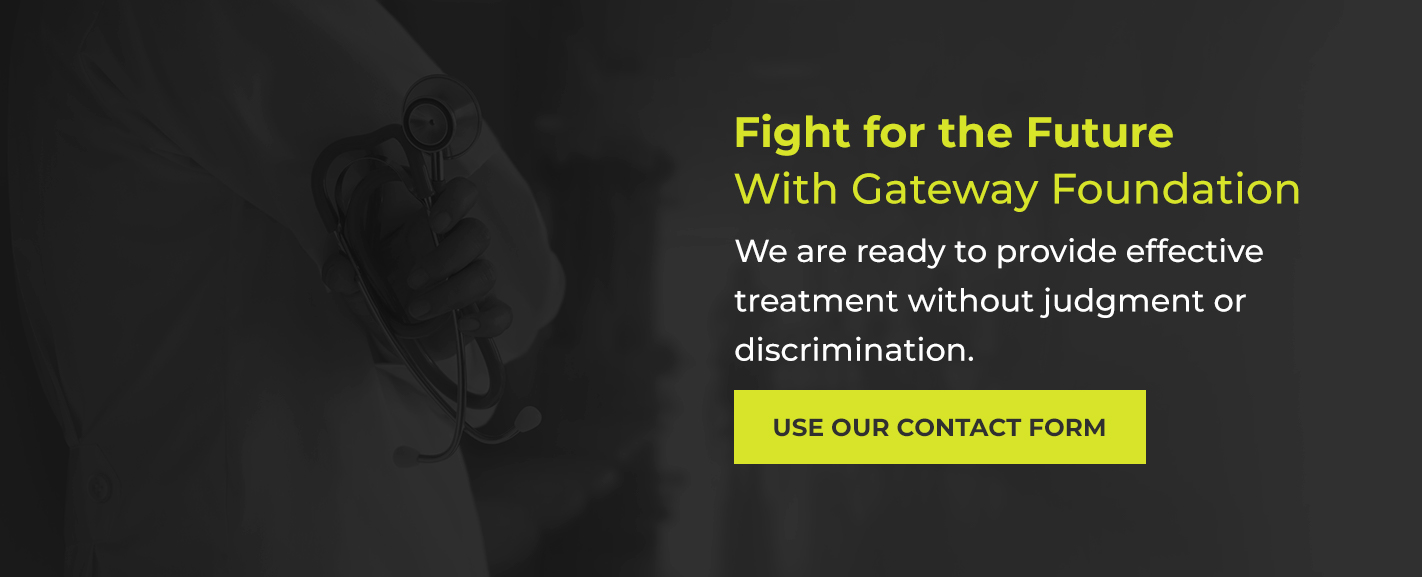- Oct 19
- Drug Addiction Treatment
Addiction to any substance comes with an array of destructive consequences. These consequences affect the person struggling with substance abuse, but also have a ripple effect that touches everyone around them. Friends, family and even co-workers and employers suffer when addiction takes hold of someone they know. Addiction tends to create blinders for the person struggling, by limiting their focus only to the acquisition and consumption of drugs or alcohol. They don’t usually have a clear concept of how big an impact addiction is making around them.
In many cases, getting a better perspective on the effects of addiction may help a person re-frame their thoughts about substance abuse and contribute to a breakthrough. Let’s take a look at the immense impact addiction has on both a public scale and a personal level.
- The Financial Cost of Drug Addictions
- The Physical Cost of Drug Addictions
- The Cost of Drug Addiction to Society
- The Personal Cost of Addiction
- Why Rehab Is Worth It
- Fight for the Future With Gateway
 The Financial Cost of Drug Addictions
The Financial Cost of Drug Addictions
Juggling finances is not always easy, even when everything is going right. Add addiction to the mix, and suddenly you have a whole new challenge to keeping money in the bank. Whether it’s alcohol or drugs, sustaining an addiction requires a steady supply of the substance, creating a completely new and substantial expenditure that can ruin your finances fast.
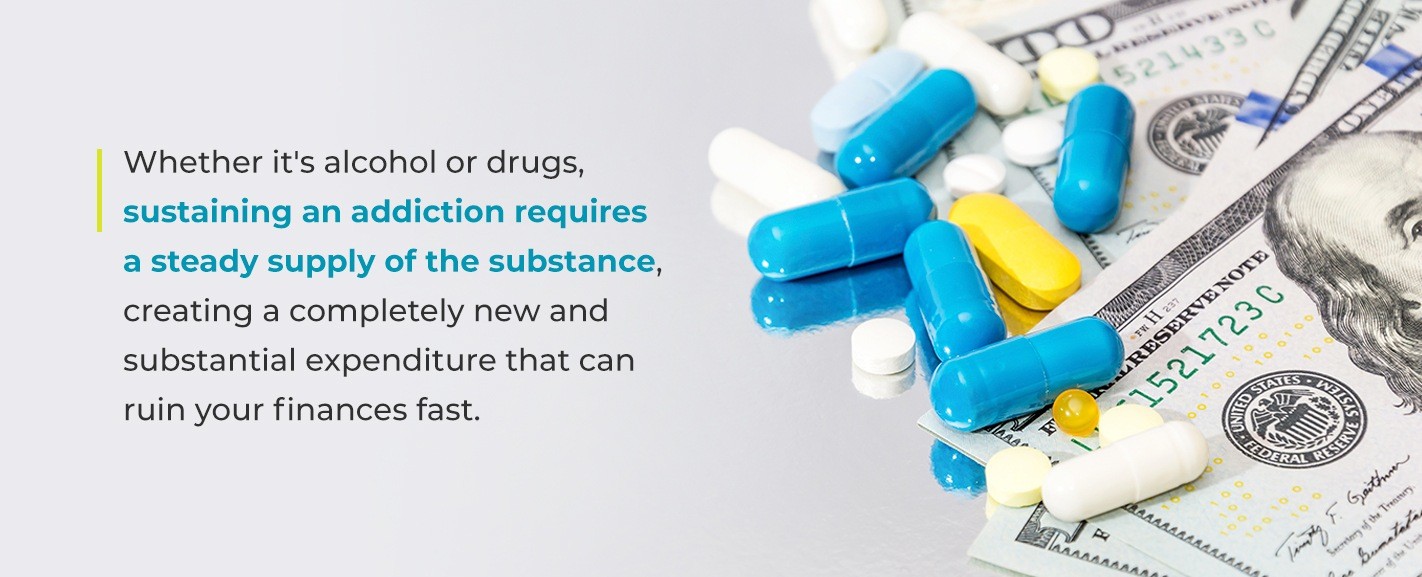
Letting bills go unpaid could lead to shut off utilities, repossessed cars, eviction or home foreclosure. While homelessness isn’t always the result of drug addiction, it happens often enough that it’s become a stereotype and is often in popular media. This situation can lead to other unintended consequences, such as alienating friends and family members, and losing close relationships.
It is difficult to estimate the average economic cost of drug addiction. Prescription painkillers like oxycodone and hydrocodone vary wildly in cost depending on whether you are purchasing them with or without insurance, and get more expensive when purchased illicitly on the street.
Heroin costs are different depending on your location in the country. It tends to be cheaper in communities with rampant opioid abuse, as an alternative to prescription painkillers. The latest United Nations (UN) data puts the average gram of heroin at $152, and someone deep in a heroin addiction can easily go through several grams a day. The same body of data puts a gram of cocaine at $93.
The cost of alcohol is highly variable as well. It depends on the quality and combination of beer, wine and liquor the person consumes as well as the taxes applicable in the region. In Washington state, for example, liquor is subject to an excise tax of $32.52 per gallon in comparison to California’s $3.30. Over time, someone addicted to alcohol could easily spend thousands more in Washington than in California, even if they were only buying the cheapest alcohol available. If they were to go to for a mid-shelf brand, costs may double or even triple.
The Physical Cost of Drug Addictions
Addicted individuals aren’t just sacrificing their hard-earned money to substance abuse — they are also destroying their bodies. Every substance of abuse affects the brain and body in adverse ways. Alcohol, for example, is the third leading preventable cause of death in the United States behind poor diet and physical activity, and the number one killer — tobacco. All substances of abuse cause significant side effects in both the short and long term, and the symptoms get worse over time. Some of the general effects to worry about affect these systems and organs:
- Cardiovascular systems
- Respiratory systems
- Gastrointestinal systems
- Musculoskeletal systems
- Neurological systems
- Hormonal systems
- Kidneys
- Liver
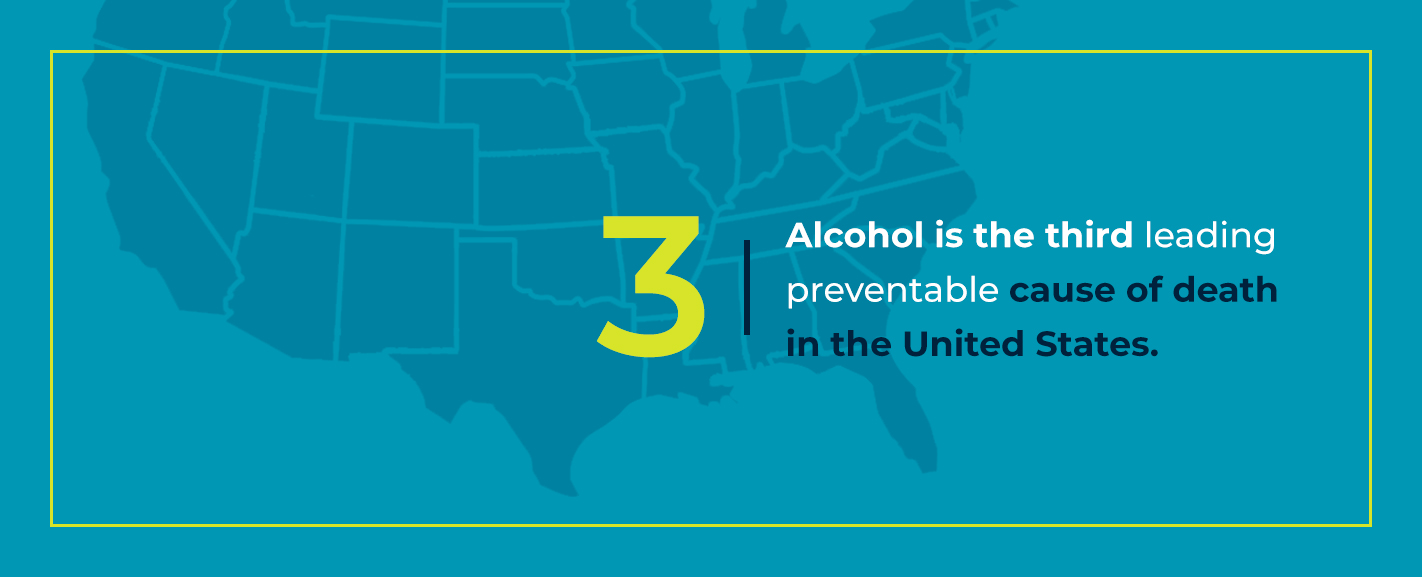
- West Virginia: 51.5 per 100,000
- Delaware: 43.8 per 100,000
- Maryland: 37.2 per 100,000
- Pennsylvania: 36.1 per 100,000
- Ohio: 35.9 per 100,000
The Cost of Drug Addiction to Society
The concrete financial and physical costs of addiction aren’t all we have to worry about. Nearly 24 million people in the United States alone are addicted to alcohol and drugs, approximately 10% of Americans over 12 years old — roughly equal to the population of Texas. Unfortunately, only 11% of those with an addiction seek treatment.
The massive scale of substance abuse in the United States has resulted in billions of dollars lost addressing the consequences. The estimated cost for substance misuse to society is more than $820 billion each year and is expected to continue increasing.
- Tobacco: $300 billion. Approximately $170 billion is in direct medical costs and more than $156 billion in lost productivity.
- Alcohol: $249 billion. Binge drinking accounts for about $191 billion, with lost productivity, legal expenses and medical expenses making up the rest.
- Illegal drugs: $193 billion.
- Prescription drugs: $78.5 billion.
How does drug misuse affect society? Let’s take a look at the specific ways in which drug use racks up these huge costs.
1. Lost Productivity
An individual with a substance use disorder cannot perform their best — or even adequately — when they are abusing a substance. That reduction in performance may seem insignificant on a personal level, but it adds up to more than $120 billion in lost productivity each year. This loss in productivity is compiled from data including reduced participation in labor, incarceration, hospitalization, premature death and participation in addiction treatment programs that interfere with work. The total costs are:
- $49 billion in missed workdays
- $48 billion in incarceration expenses
- $4 billion in premature deaths
There are many ways in which a person with an addiction might contribute to these statistics. One individual might use up all their sick days to accommodate substance abuse and recovering from the effects of intoxication, only to actually get sick and have to take further time off. A person with alcohol addiction might roll into work late three times a week and be unable to get work done due to hangovers. These are the most common reasons for lost productivity, but trips to the hospital and arrests leading to jail time are also possible contributors.
2. Crime and the Criminal Justice System
Drug abuse is a major contributor to crime in the United States. The cost of crime related to drug use is more than $61 billion, with most of that attributed to costs of the criminal justice system. The drugs most associated with the commission of crimes are cocaine and methamphetamine. Heroin drives much of the nation’s property crime.
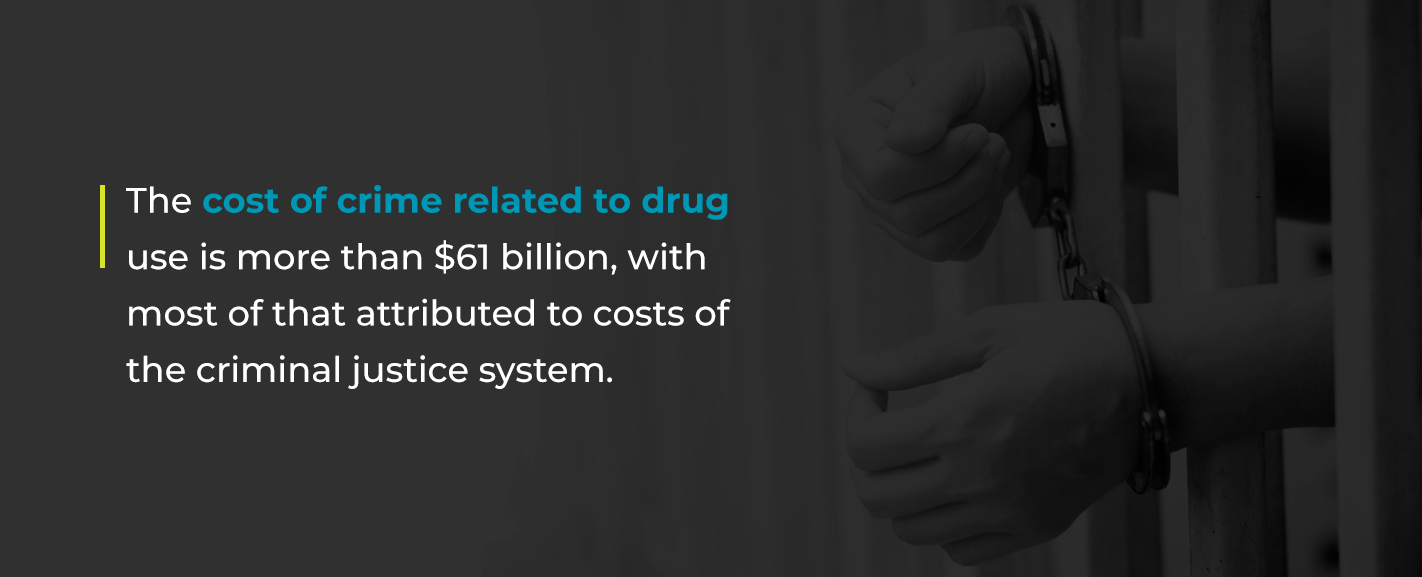
Many addicted individuals believe their substance abuse could never escalate to the level of committing crimes, especially early on in the addiction. It’s true that some addictions are more likely to lead to criminal wrongdoing than others. People addicted to alcohol, for example, are less likely to resort to acts like robbery to obtain alcohol because the substance is legal and relatively easy to obtain in steady supply at a fairly low cost.
A person who uses opioids, on the other hand, might find that they cannot sustain a pill addiction and may transition to heroin, which is widely known to prompt the type of desperation that could lead to criminal activity to fund the expensive habit. ADAM II reports that about 17% of state prisoners and 18% of federal prisoners admitted to committing their crimes as a means to get money for drugs.
3. Healthcare Systems
It’s no surprise that substance abuse leads to a high healthcare cost burden. Even though many individuals with addictions avoid regular checkups to try to hide the symptoms of their substance abuse, the build-up of physical effects often leads to expensive interventions down the road. Drug-related healthcare costs in the U.S. amount to more than $11 billion. This figure includes:
- Medical interventions including emergency services
- Inpatient or hospitalization treatment programs
- Prevention and research
Emergency department visits associated with substance abuse total about $161 million, and $5.5 million more goes to the costs for those who must be hospitalized.
The healthcare costs incurred by those who abuse drugs and alcohol isn’t just financial. ADAM II reports that many hospitals struggle with understaffing, and the preventable effects of drug addiction result in a greater burden for those who provide care. Lower nurse-to-patient ratios are associated with worse outcomes and more deaths of patients.
The Personal Cost of Addiction
The effects of drug abuse on society are one thing, but we cannot overlook the harm addiction causes on a personal, psychological level. Here are four of the ways the cost of drug abuse takes a personal toll.
1. Career Trajectory
Refusing to get help with an addiction is a surefire way to ruin your career. Even if you find your work relatively enjoyable, an addiction can quickly get in the way. It may start off with you showing up to work late. Drug and alcohol abuse make it much harder to get yourself out of bed in the morning, and the apathy caused by an increasing reliance on substances can completely destroy your motivation.
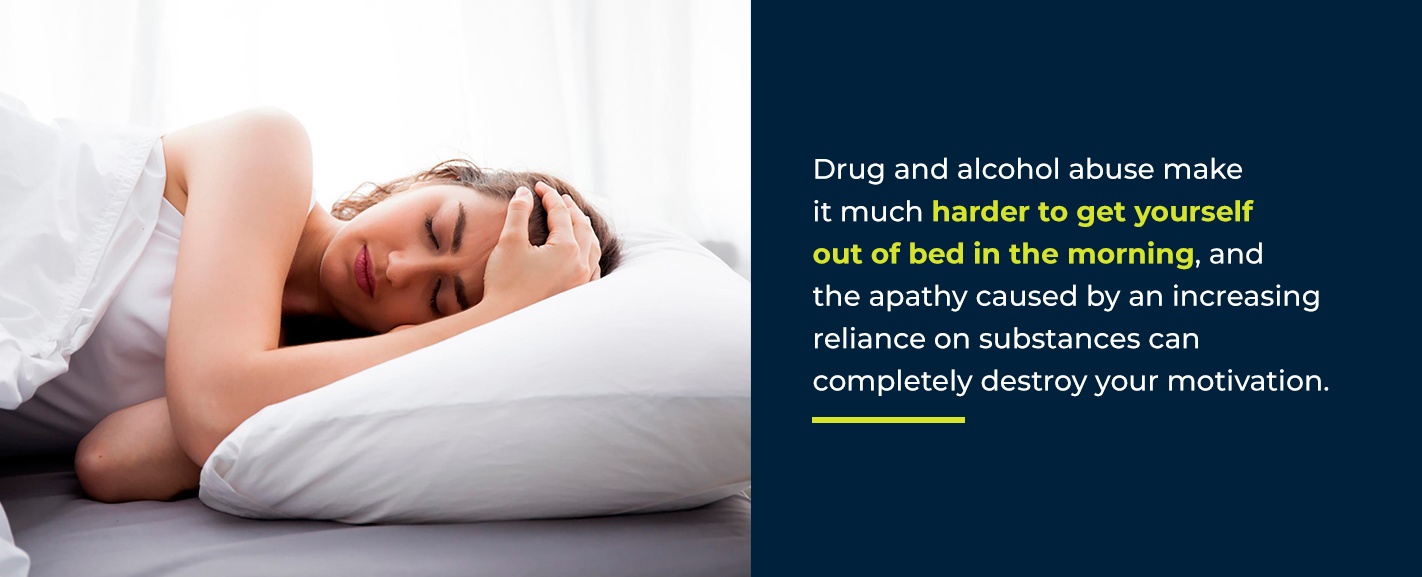
One 2006 study found that a whopping 19 million people — around 15% of the U.S. workforce — admitted to drinking on the job, right before work or arriving at the workplace hungover from the night before. Plus, those who use illicit drugs or drink heavily are much more likely to have excessive absences, at least three unscheduled days.
Losing a job to substance abuse is devastating, from a financial standpoint and also in terms of your future. You’ll be unlikely to receive a recommendation if you were terminated, making it much harder to find a new job. And if you do manage to find a new position without having treated your addiction, you’ll only start the pattern all over again. Addiction will stall your career or drive it off the tracks completely, and it will do so faster than you expect.
2. Self-Esteem
Substance abuse and self-esteem have a complex relationship. Low self-esteem has been linked to an increased risk of drug and alcohol abuse, but addiction also leads to lower self-esteem in the long run. This cyclical relationship makes it very challenging to recover a strong sense of self and feel comfortable with who you are.
Addiction causes a loss of self-esteem in part by changing the way the brain works. Consistent substance abuse physically alters the brain in ways that change your personality. When the brain is healthy, it rewards and motivates healthy behaviors like exercise and creative hobbies. When it’s addicted, the brain shifts away from rewarding healthy behaviors to rewarding only drug and alcohol use.
Because so much of our identities are wrapped up in the things we enjoy and the activities we participate in, addiction can make it feel like you’ve completely lost yourself. Feeling unable to control cravings for a substance can make a person’s self-esteem plummet quickly. Those who abuse drugs or alcohol may also feel an overwhelming sense of guilt — both over their addiction and the effect on those around them — an emotion that can impact self-image.
Luckily, quality addiction treatment can teach you the tools necessary to re-train your brain to enjoy the things you used to and pick up new healthy habits to help you become the person you want to be.
 3. Personal Relationships
3. Personal Relationships
A hidden danger of addiction is its ability to make a person believe that substance abuse only affects them. It’s common to justify substance abuse with phrases like, “It’s not hurting anybody else,” even when this is blatantly untrue. The effects of addiction radiate outward from the individual to their immediate family, friends and coworkers.
One of the most common symptoms of drug abuse is the formation of codependent relationships, which are common when one partner is living with a drug or alcohol dependency. They may become entirely dependent on their partner for financial support. In many cases, domestic abuse and violence also arise.
Effects on immediate family are the earliest to show and generally the most severe. Children are particularly vulnerable. About 12% of kids ages 17 and under live with a parent who has a substance use disorder, and living with that parent can cause long-term mental health issues that require significant resources to resolve. Spouses often have to endure excess stress from their partner failing to fulfill obligations at work or home, and untreated addiction is a factor that many people successfully use to justify divorce.
In 2017, 36% of children who were removed from homes and placed in the foster care system found themselves in that situation because of a parent who abused drugs or alcohol. The number of children placed in foster care because of parental drug abuse has been rising steadily for the last decade. This number may be even higher because it doesn’t include informal placements where a child is removed from the parent’s home and placed with family members or friends rather than entering the foster care system.
Extended family ties may be severed due to feelings of abandonment, concern, guilt or embarrassment. Neighbors, friends and coworkers may also build up wells of resentment against the addicted individual because of unreliability and erratic behavior.
Repairing, building and maintaining healthy relationships is paramount to a successful recovery because addiction tends to create such profound isolation.
4. Mental Illness
Mental illness and substance abuse are two more issues that unfortunately go hand in hand. It’s common for substance use disorders to occur alongside other mental illnesses, but it’s not always the case that one caused the other. There are common risk factors that may lead to both mental illnesses and substance use disorders, and they may be genetic or environmental in nature.
Some research suggests that people with pre-existing mental illnesses use drugs or alcohol as a way to self-medicate. For example, someone may find that getting drunk helps to alleviate their social anxiety or that abusing their painkiller prescription mutes the crushing feeling of chronic depression. Before they know it, they are abusing the substance just to feel normal and get heavily addicted.
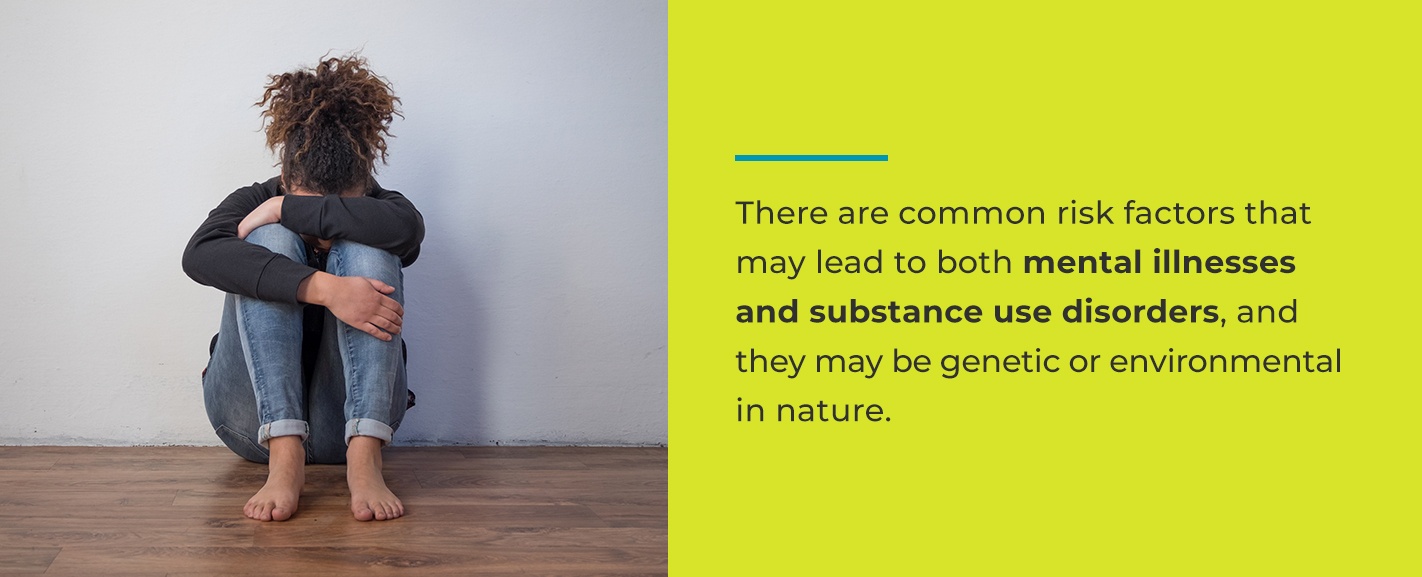
Why Rehab Is Worth It
Many people see the cost of rehab treatment for addiction as prohibitive. Most don’t realize that the available options for treatment range start at just a few thousand dollars, and many can be covered at least partially by insurance. For someone with an opioid addiction, the cost of a full year of methadone maintenance treatment (MMT) is typically under $5,000. In comparison, a year of incarceration costs about $24,000.
The more treatment you require, the more you will pay. If your addiction warrants a residential program of 90 days, for example, the cost will be significantly higher than if you are a good candidate for outpatient treatment. However, the cost of such a program will still be less than years — or sometimes mere months — of continuing buy substances to maintain your addiction.
Getting treatment will also stop your risk of physical health events from escalating. Untreated alcoholism, for example, will destroy the liver. A transplant eventually becomes the only way to save the individual’s life, and the total cost, if the individual can manage to obtain one, is more than $1.4 million, and expected to rise over time. Arresting the damage to your body can save you hundreds of thousands in medical bills and, of course, save your life.
Rehab isn’t just a way to stop the outflow of cash to substances of abuse — it’s an opportunity to reinvent yourself and become a more confident and capable person. The lessons learned in therapy will provide you with strategies to help you stay sober and help you navigate the inevitable stress of life. A treatment program is also the first step in rebuilding your relationships, both ones you’ve lost and attempted to maintain. You’ll learn to be more flexible and more resilient in overcoming challenges in your personal and professional life.
 Fight for the Future With Gateway
Fight for the Future With Gateway
With substance abuse, the stakes are high for you, your loved ones and society as a whole. Addiction can tear holes in your community and take away many of the things you’ve spent your life working hard for like your job and your family in addition to your finances. Luckily, effective treatment exists to get you on the path to recovery and sustained sobriety. Gateway has been a nationally-recognized leader in addiction medicine for more than 50 years, and we are ready to provide effective treatment without judgment or discrimination.
Gateway understands that every person experiences addiction a little differently, so we have worked hard to develop an array of treatment programs tailored to different groups, including teens and those who identify as LGBTQ+. Whether you require fully residential treatment, an outpatient program or partial hospitalization in between, we have an option for you. In combination with our robust addiction therapy services, we can work to find the most effective way forward in treatment.
If you’re ready to seek treatment for an addiction to drugs or alcohol, we commend you for your courage. Gateway programs can provide the support, guidance and resources you need to stop substance abuse and take hold of the life you deserve. To learn more about our life-changing care and how you can get started on the road to recovery, call Gateway at (877) 505-4673. You can also reach us via live chat or request more information through our contact form.

 The Financial Cost of Drug Addictions
The Financial Cost of Drug Addictions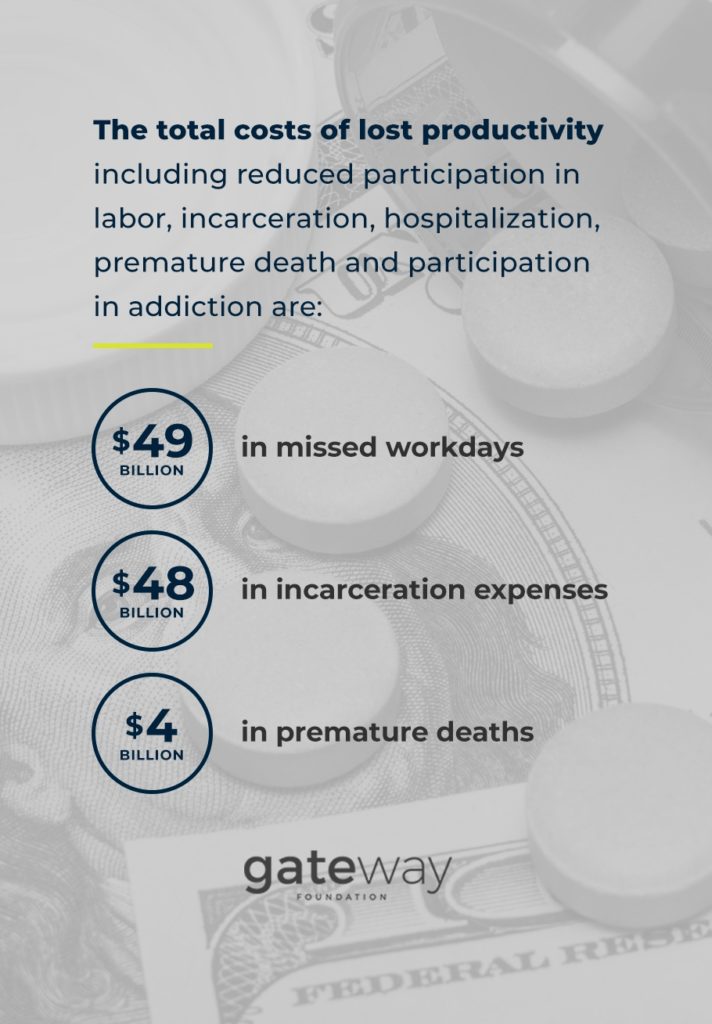
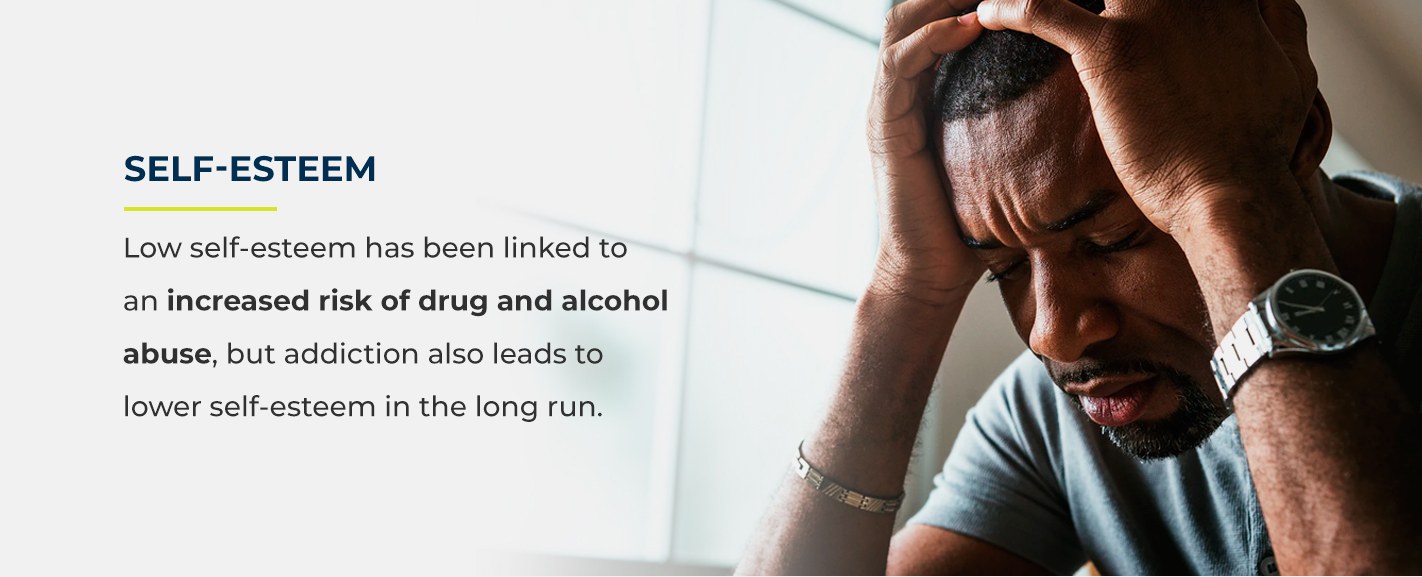 3. Personal Relationships
3. Personal Relationships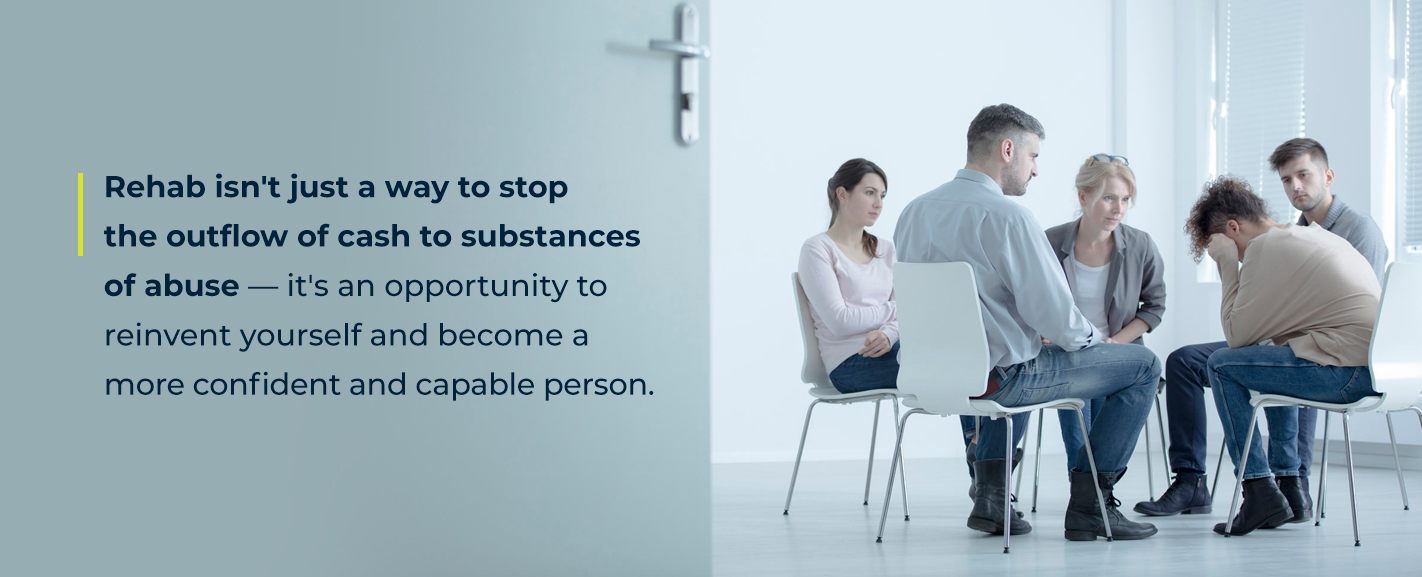 Fight for the Future With Gateway
Fight for the Future With Gateway